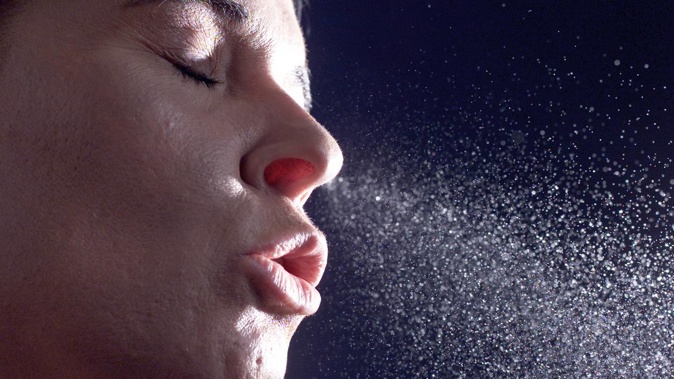
New Zealand should be prepared for a flu season as bad as last year’s onslaught, virologists say, with returning strains and overseas plane passengers raising the risk.
But there’s cautious optimism that Covid-19 at least won’t fuel quite the same “twindemic” of 2022, with expectations that coming waves will be smaller than the first Omicron surges.
After a two-year absence, the flu returned in force last year, swamping hospitals with the highest numbers seen in a decade.
Flu began widely spreading in May, before pushing case numbers over June in some places to more than four times what doctors saw across recent years.
Ahead of this season, virologists told the Herald that a similar-sized surge was possible, for two key reasons.
One was that the bulk of last year’s flu cases had been the familiar influenza A (H3N2 and H3N3), which typically caused more illness in elderly populations.
Yet, there’d been comparatively little influenza B strains, which have been circulating in the northern hemisphere and often affect younger and school-aged children.
H1N1, or “swine flu”, has also been on the rise overseas.
“Because we didn’t see these two viruses much last year, the population will be susceptible to them,” ESR virologist Dr Sue Huang said.
“There’s potential for these viruses to trigger substantial illness.”
/cloudfront-ap-southeast-2.images.arcpublishing.com/nzme/5URFLM773ZCW3GMGGGL4WWMC4E.jpg)
ESR virologist Dr Sue Huang. Photo / NZME
Otago University virologist Dr Jemma Geoghegan agreed those returning strains could help make for another big season, which might again peak earlier than usual.
“I would say that we could likely see a similar picture to 2022, where we see an earlier peak and an increase in the number of cases too.”
She pointed to the other big factor: A higher number of international arrivals compared with last year.
“It’s important to look at what is happening globally, as we know from Covid-19, how connected New Zealand is,” Geoghegan said.
“Assuming international travel has returned to close to pre pandemic levels now, this would fuel imports of respiratory infections.”
In a normal year, the flu infects around one in four Kiwis and kills perhaps 500 – making it hitherto our single deadliest infectious disease before Covid-19.
Huang said that because most of the population had now been exposed to Omicron, it was possible Covid-19 wouldn’t cause quite as much havoc as it did last year, when successive BA.2 and BA.5 waves put overloaded hospitals under extreme pressure.
But that could change if another high-spreading variant took off.
Covid-19 modeller Professor Michael Plank noted that the recombinant Omicron type XBB 1.5 – which has been driving nearly all new Covid-19 infections in the United States – was beginning to trend up quickly here.
“It’s really put its foot down in the last couple of weeks and looks like it could become dominant and contribute to a bit of a rise in cases.”
But he doubted that bump would prove as large as that of last winter’s BA.5 wave, which topped out at more than 10,000 daily reported cases in July.
Plank said it remained to be seen just how this flu season shaped up, but he hoped it wouldn’t be on the scale of 2022.
“Nevertheless, I think we do need to be prepared for another winter of high levels of respiratory illness, compared with pre-pandemic times.”
Right now, surveillance showed levels of influenza-like illnesses were low across New Zealand, with Covid-19 hospitalisations and death rates also hovering around their lowest since Omicron first arrived.
/cloudfront-ap-southeast-2.images.arcpublishing.com/nzme/CJ3NHIZERZFG3C3DPKEAALENYU.jpg)
In a normal year, the flu infects around one in four Kiwis and kills perhaps 500 – making it hitherto our single deadliest infectious disease before Covid-19. Photo / NZME
A Te Whatu Ora-Health New Zealand spokesperson said a range of measures were being implemented to prepare for winter, such as a new programme to spread resources more widely across the health system.
“We will be consulting with primary care and local pharmacies over the use of telehealth and local care to support rural, Māori and Pacific communities by extending the Summer National Telehealth Service, including nurse triage and GP overflow services and providing support to rural communities.
“We are also working hard to ensure patients are transferred to home after being in hospital, so people can recover better in their own environment, while making sure they have the right care at home to prevent re-admission by expanding community rapid response.”
University of Auckland vaccinologist Associate Professor Helen Petousis-Harris recommended that Kiwis get their flu shot when it becomes available next month – and also the new bivalent Covid-19 booster if they’re eligible.
Recent research had suggested bivalent vaccines – soon to be available to Kiwis aged over 30 – could slash hospitalisation rates among over-65s by 73 to 84 per cent, compared with no booster.
The updated vaccine – targeted against Omicron type BA.5 - was also expected to be effective against the recent strains of XBB.
While each new boost tended to bring “diminishing returns” in neutralising antibodies, those who’d already been vaccinated, infected or both would still have some protection against severe disease – namely in the form of longer-lasting B and T cell responses.
“[Covid-19] is something that you get again, but normally, it will be milder if you’ve got good hybrid immunity onboard,” Petousis-Harris said.
“So, if it’s been quite some time since your last boost or infection, getting a top-up may be a good idea as we’re heading toward winter.”
Take your Radio, Podcasts and Music with you









